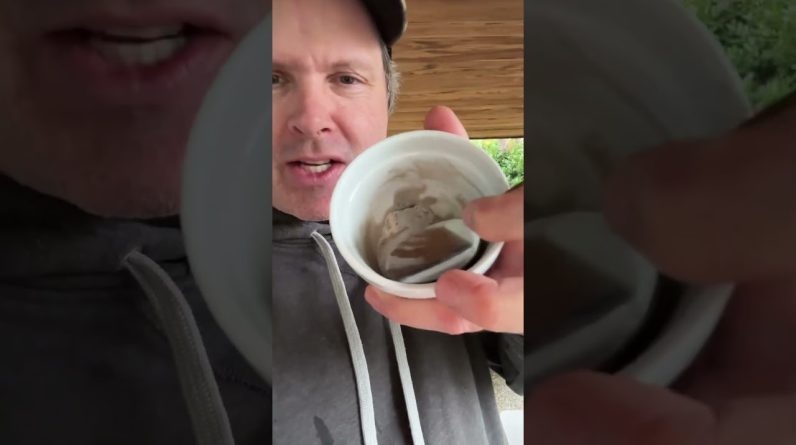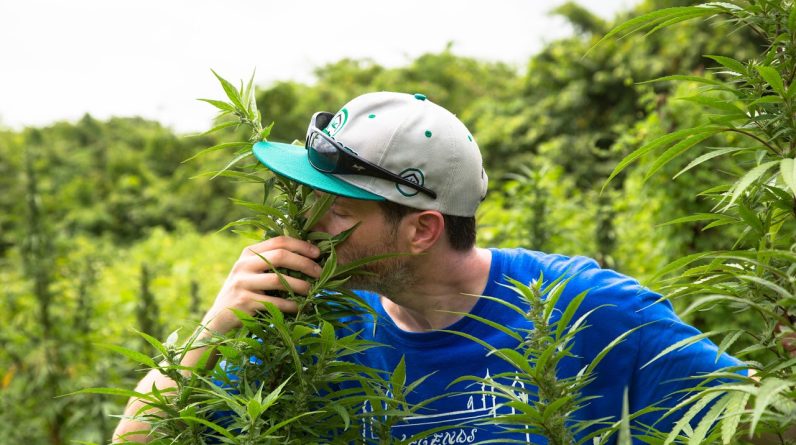By Dr. Lunglife
Why Vaporize THC Oil?
Chemical analysis has shown that a cigarette made of raw marijuana contains at least as much “tar” as an equal-sized cigarette made of tobacco. Although medical studies have not shown a connection to date, this fact does suggest that lung diseases such as cancer, emphysema, and bronchitis are possible consequences of heavy marijuana smoking just as they are for tobacco smoking. The frequency of use and the amount smoked are both important when considering lung damage. Fortunately, pot smokers generally smoke much less than tobacco smokers. If one uses high-grade marijuana such as sinsemilla, manicured buds, or fine-screen shake in moderation, lung damage is not likely, as only small amounts are needed to obtain a high. If you have access to high-grade smoke, this article may not be useful, especially if you use a water pipe. However, if you decide to grow your own in the woods, the quality may not be as good. Extracting this essential oil from cannabis will concentrate mediocre-grade marijuana into a powerful liquid. Several irritating and smelly ingredients are removed from this hashish or THC oil. It also takes up much less space, which may be important if secrecy is necessary.
This article suggests a method for decreasing lung damage by inhaling the essential oil of cannabis after vaporizing it. Vaporization means the boiling off of the THC oil, using heat, but not fire. The intense heat of fire promotes many chemical reactions with oxygen, which destroys some of the THC and creates new chemical substances. Some of these firecreated chemicals may be hazardous. By vaporizing the essential oil, some danger is avoided, that of inhaling tar, burnt cellulose, carbon monoxide and combustion products into the lungs. Although the process of vaporization does still produce heat, the vaporized oil is at the boiling temperature for the oil rather than at the much higher temperature of flame.
Method A: using aluminum foil, candle, and a tube
An easy way to vaporize THC oil is by placing a drop on a piece of aluminum foil, heating this over a candle, and inhaling the vaporized oil through a tube such as a straw. A tube that works especially well is from a clear plastic Bic pen. The tube is an improvement over the nose in getting over the rising air full of the vapor, which rapidly condenses into tiny droplets of oil. The tube also helps to control the temperature of the vaporized oil before it enters your lungs, by catching it an inch or so above the foil after it has cooled some. Hold your tongue near the mouth end of the tube, as a way to further cool the vaporized oil. Your tongue should be protected against the heat by wetting it often with saliva.
Method B: using a high intensity light, dimmer, and tube
The materials for this electrical oil vaporizer are easy to obtain, and not difficult to make. The most expensive item is a light-dimmer which includes a power outlet. If you are handy, you can easily construct a box to include a dimmer and an outlet at a cost of around $8. The type of dimmer that pushes on or off, and rotates for power level is the best, for you can keep the best power setting ready to go. The second major item is a small high-intensity reading light, which was recently found on sale for $8 at a local department store. It features a 12 volt incandescent bulb. Hidden in the base of high-intensity lights is a transformer that converts 120 volt house current to a safe 12 volts. A 12 volt bulb is not only safer, but also has a compact filament ideal for the purpose. The only other items would be a toothpick or wooden cuticle stick for applying oil, and the pen tube mentioned above.
To use an electric vaporizer, a 12 volt auto bulb (#1156) is broken in such a way that the filament remains intact. A safe way to do this is to wrap the bulb in a kleenex, and then hit the bulb sharply with pliers so that it breaks. Some remaining pieces of glass will have to be removed with pliers. Orient the light shade sideways to catch excess drips of oil. The THC oil is then dabbed onto the filament, and the filament is heated just enough to vaporize the oil, but not enough to glow. Be prepared to dab oil on a glowing part, in order to protect the filament from air and make it last longer. The rising vapor is sucked in through the tube. Slow deep breaths will maximize efficiency. Turn off the heat before your lungs fill, to avoid wasting oil. It is convenient to use a glass syringe to hold a supply of oil. At first the filament cannot hold much oil, but after some time a dark crust forms, which helps hold oil. This crusty stuff has a higher vaporizing temperature than the desired THC, and is worth keeping out of the lungs. After many uses, the filament is surrounded by a thick ball that is able to hold a full drop of oil. Even with care, a filament will eventually burn out after a few months of use. But until then, one lungful is enough for an enjoyable high.
Method C: The Compact “High Tech” Vaporizer
To make a more sophisticated vaporizer, all the necessary parts are readily available and can be put into one small box. The following list is for the oil vaporizer illustrated here, but you can of course be inventive regarding design and material. The first three parts may be purchased at Radio Shack:
(1) an experimenter’s box 7 3/4″ L X 4 3/8″ W X 2 3/8″ D, black plastic case with an aluminum top, cat. no. 270-232 $2.99;
(2) a push on/off rotary dimmer, cat. no. 61-2699A $6.95;
(3) a small power transformer 120 VAC to 12 VAC 450 mA, cat. no. 2731365 $3.99.
Items that can be purchased at an automotive supply store such as Track Auto include:
(4) an auto turn signal/back-up light bulb #1156, two for $2.84;
(5) a simple single-filament bulb socket, such as for a Ford/Chrysler ’71-76 cars, which costs $1.99.
The remaining supplies include:
(6) a standard 2-wire electrical power cord;
(7) an electrical “nipple” for use in a lighting canopy kit, which is a 3/8″ o.d. tube threaded on the outside, and two matching nuts;
(8) two feet of rubber or plastic tubing and;
(9) a drinking glass, or to be fancy a 3″ glass display dome. The total cost is under $25. Tools needed include an electric drill and various bits; several electrical connectors of the twist type; needle-nose pliers; small nut and bolt pairs; and a screwdriver.
To build the vaporizer, first remove the plastic rotor from the light dimmer, determine the size hole necessary for its shaft, and measure the location for the hole on the metal lid of the box. Drill that hole, insert the light dimmer, and use a pencil to mark the location for the small nuts and bolts which will hold the dimmer in place. Then place the transformer close to the dimmer and drill holes for its bolts. The light socket needs a hole that is tight, so you may need to use a file to finish its hole. The design illustrated uses an 11/16″ hole. Near the bulb socket will be a hole to attach the suction tube. A method that works well is to push a 3/8″ rubber tube over a threaded electrical nipple, which goes through the hole and is held in place with nuts above and below the metal plate. A hole is also drilled in the plastic case for the power cord and a larger hole for the suction tube. Connect the wiring as shown, with the house current going to the transformer inputs, after the hot line also goes through the light dimmer. One line from the 12 volt transformer output goes to the lead from the light socket, and the other is wrapped around one of the bolts in order to use the metal top of the box as the return circuit. Tighten the bolts and screws, and it is ready to go except for the bulb. Prepare the 12 volt bulb the same way as with method B, but because the bulb will now be aimed vertically, a little epoxy glue, nearly filling the base, will make it easier to retrieve oil that will drip. Do not accidentally glue the bulb to the socket.
While the bulb is being conditioned, the high-tech vaporizer is used the same way as the high intensity light model, but after the filament can hold enough oil, an overturned glass can hold the vaporized oil until thick enough to inhale in a short breath.
How To Extract THC Oil
Extracting THC oil is not difficult.
It does require a concern about safety, as all the solvents listed are flammable. The steps necessary to obtain “hashish oil” or the essential oil of cannabis, may be found in two informative books. The first is a book entitled Cannabis Alchemy: The Art of Modem Hashmaking by David Hoye, first printed in 1973 by the HIGH TIMES/Level Press. Another book which describes the same procedures is Marijuana Potency by Michael Starks, 1977, And/Or Press, Berkeley. These books are available from book dealers who advertise in HIGH TIMES. They contain information to help one extract and purify the essential oil of cannabis, making it quite potent. Consult these or similar books for details.
The process essentially involves leaching the THC-containing oil from marijuana in a manner similar to percolating coffee. However, instead of water, the solvent is denatured alcohol, which is evaporated prior to consumption. Denatured alcohol is a common solvent and fuel found in most hardware stores. It is 95% ethyl and 5% methyl alcohol. Other alcohols can be used, but this is the cheapest and most commonly available.
The extraction can be done safely in a pressure cooker, over an electric heating element. Keep the heat very low as alcohol boils much more easily than water. No fire or sparks can be tolerated, and there must be good ventilation. Have a fire extinguisher handy, water will not extinguish an alcohol fire. The first step involves powdering your marijuana and placing it in a pressure cooker and covering it with denatured alcohol. Boil it for one hour, drain and save the alcohol, and boil the marijuana one more hour with fresh alcohol. The leached marijuana is thrown out, and the alcohol is boiled off to leave the first stage oil, which is green. I suggest saving the alcohol for further use by running the alcohol steam through a condensing coil leading down to another pressure cooker, which is kept cold in an ice bucket. When the alcohol is nearly gone from the oil, finish the removal in a Pyrex double boiler. The top pot contains the oil, and fits into the lower pot which contains water. The boiling water prevents the oil from getting too hot, but is still hotter than the boiling point of the remaining alcohol. The green THC oil from this alcohol extraction can be vaporized and inhaled at this time, or it can be isomerized and further purified if desired.
The oil contains THC and also similar but less desirable molecules called cannabidiol and cannabinol. Isomerization changes cannabidiol into tetrahydrocannabinol (THC), and the THC to the most active isomer, delta-9-THC. To isomerize your oil, first weigh it, then dissolve it in 10 times its weight of denatured alcohol. Add one drop of strong sulphuric acid (auto battery acid) for each gram of oil. Wear goggles and gloves as concentrated sulphuric acid causes burns. Have bicarbonate of soda handy to neutralize spills.
Boil this mixture for two hours, adding more alcohol as needed to replace the amount lost to evaporation. To reduce alcohol evaporation and the danger of fire, you may cover the pot with a large overturned metal lid, filled with ice. This cool surface will condense the evaporated alcohol, and allow it to drip back.
Further purification is done by mixing the isomerized oil and alcohol mixture with an equal amount of water. Add one gram of sodium bicarbonate for each drop of sulphuric acid. Place this in a smallnecked glass bottle. Add more water so the fluid level is near the bottle top, where it narrows. Then add a small amount of a non-polar solvent. Shake the bottle gently, and remove the solvent and THC oil layer by sucking it out with a baster or an eyedropper. The final step is to heat (electrically only) the result in a double boiler over water to remove the non-polar solvent. Suitable nonpolar solvents include petroleum ether, ligroin, ethyl ether, benzene, xylene, toluene, chloroform, methylene chloride and carbon tetrachloride. All of these except the last three are highly flammable and lighter than water. Good ventilation is essential. It is also important when the solvent is nearly gone to add a drop or two of water and keep heating until the water has evaporated, to be sure that the lower boiling point solvent is totally evaporated. At this point you have a highly concentrated oil, with all toxins removed, which contains a high proportion of THC. For more detailed purification and isomerization procedures read the books. Dr. Lunglife says, “Safety first!”
The author, known to us only as Dr. Lunglife, never told us his real name. He did tell us that he used to live in New England, where he had fun sneaking into the woods and growing his own pot. After years of mediocre crops he finally enjoyed a bumper crop on his hidden 10’ x 12’ plot (odd shaped for camouflage). The seven pounds dry weight he harvested was boiled in alcohol to extract the oil; and the crude oil was further concentrated, isomerized and purified using the methods in the books listed. The oil he derived from this one crop boiled down to six ounces, and has lasted him for seven years, with use nearly every evening and weekend. He reports that vaporizing THC is not only efficient but has protected his lungs. He wants to stress that this article was written, not to encourage illegal activity, but to inform those who are currently smoking marijuana about advances in technology.

This article appears in the May 1989 issue of High Times. Subscribe here.
The post From the Archives: Vaporizing THC Oil: An Alternative to Smoking Marijuana (1989) appeared first on High Times.





